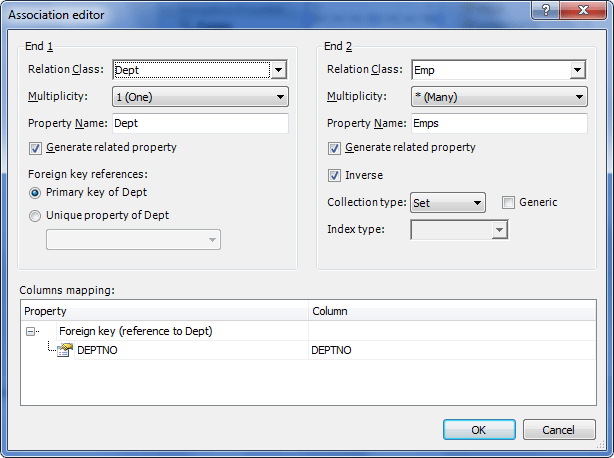Association is one of the core objects of a model. It defines relationships between other model objects like classes and complex types established on the basis of foreign keys. Associations are mapped as foreign keys to the database and can be generated automatically from the foreign keys when reverse engineering an existing database.
An association has two objects engaged in it and these objects are known as its Ends. An association End defines the object and the number of object instances that can exist at this end of an association. It can also optionally define operations performed on the association end.
Model objects can have navigation properties, which are optional properties designed to navigate from one association end to the other. A navigation property defines the association it navigates and its ends.
Multiplicity of an association End defines the data type of a navigation property. If it equals 'Many', the navigation property's data type is 'collection'.
A model object can have multiple associations. On the diagram, associations are represented as dotted line connections with arrows.
 Association Editor Dialog
Association Editor Dialog
To create an association, use the New Association
You can create three types of associations: one-to-many (default), one-to-one and many-to-many. For details on the appropriate procedures, refer to the corresponding topics. |
